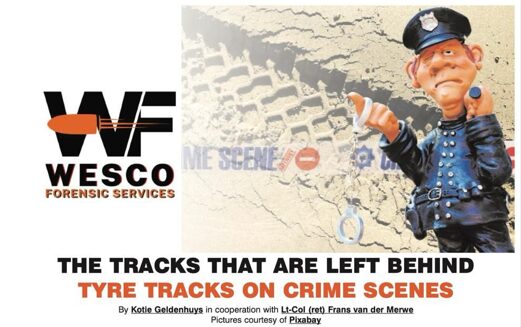Mastering Crime Scene Management: Essential Techniques and Procedures

Discover expert techniques for mastering crime scene management, ensuring proper evidence handling and accurate investigation outcomes. Learn the crucial steps that every forensic professional must know.
Unsolved Mysteries: South Africa
Cold cases can be revived with advanced forensic techniques and expert investigation. If these cases employed Wesco Forensics, chances would have been bigger in finding these culprits.
Wesco Newsletter September 2024 – A Celebration

Celebrating one year of Success and Innovation.
A Year of Achievements.
:Coming together is a beginning.
Keeping together is progress.
Working together is success.”
– Henry Ford
The Silent Witness: Unlocking Hidden Clues in Forensic Science

In the world of forensic science, even the smallest trace of evidence can speak volumes. Silent Witness explores how cutting-edge forensic techniques unlock hidden clues that often go unnoticed, providing a voice for the voiceless in high-profile criminal investigations.
Wesco Servamus September 2024

When Moegamat Yusuf Isaacs from Ottery in Cape Town kidnapped and murdered his neighbour’s granddaughter, eight-year-old Sasha-Leigh Crook, who was visiting her grandparents for the holidays in July 2003, he did not realise that tyre tracks would link him to her murder.
Wesco Servamus August 2024

When a perpetrator tries to hide evidence of a crime, it is commonly referred to as “covering their tracks” such as when a burglar wipes his fingerprints with a cloth after breaking into a home. Although he believes that he has erased his traces, he might not realise that his shoe or vehicle’s tyre impressions can still connect him to the crime scene. These impressions are referred to as “pattern evidence” because they create unique patterns. Shoes and boots leave distinct prints and impressions based on their brand, style and size.
Wesco Servamus July 2024

To prove a person’s guilt, a prosecutor needs to demonstrate that the evidence introduced in court is directly linked to the evidence collected at the site/scene of a purported crime. The prosecution must explain that the handling of the evidence was conducted appropriately, without any contamination or tampering. Failure by law enforcement to handle the evidence correctly opens the door for challenges, asserting potential tampering, unreliable test results or the possibility that
evidence was intentionally placed at the
crime scene.
Wesco Servamus June 2024

Crime scene examiners use sophisticated
methods to retrieve physical evidence from
crime scenes. This includes using various
forensic light sources operating at different
frequencies and employing diverse chemicals to identify and validate the existence of evidence. UV lights are also used to unveil hidden evidence that is not visible to the naked eye. However, the mere collection of physical evidence is insufficient – to hold significance, the evidence must be legally obtained and undergo proper legal processing.The unequivocal identification of physical evidence at the crime scene forms the foundation of a successful investigation.
Wesco Servamus May 2024

Recording a crime scene is a skill that
involves creating a precise replica of the
crime scene, for the benefit of the court or
aiding in an investigation. This process is
crucial for solving a case and the successful
conviction of offenders. Accuracy is paramount, as the effectiveness of an investigation hinges on the thorough and meticulous processing of the crime scene.
Wesco Servamus April 2024

Wesco’s Servamus Article April 2024
